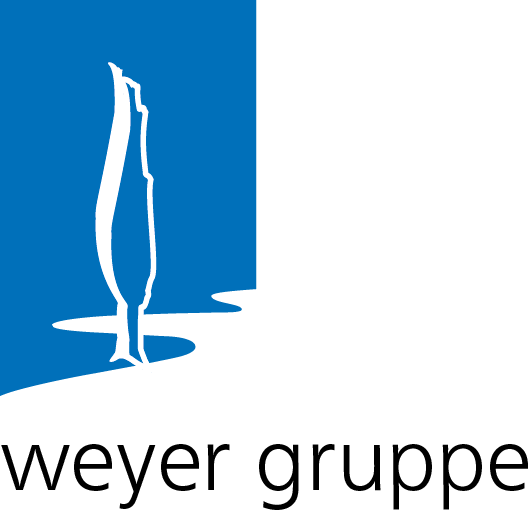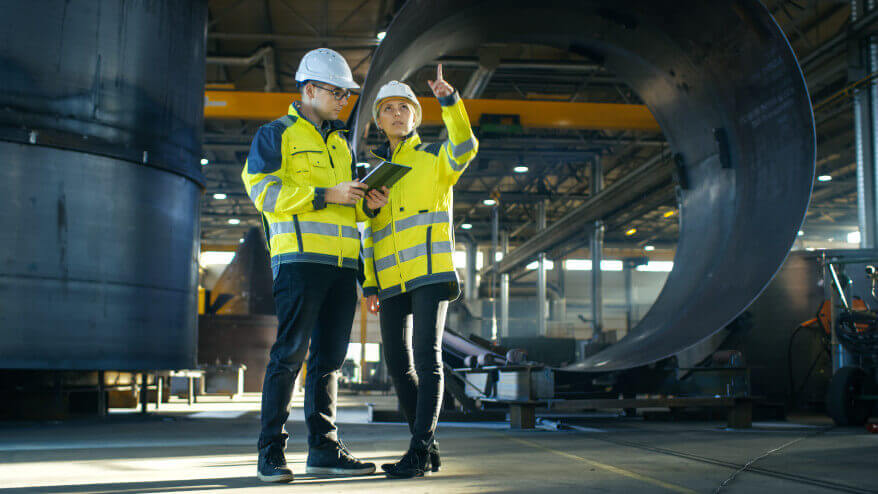EPCM projects require the expertise of different engineering disciplines and multidisciplinary planning
In its guest article in the December issue of CHEManager, the weyer group reports on the handling of EPCM projects.
In EPCM projects, the expertise is provided by a company’s engineering departments, e.g. process engineering, EI&C, plant planning, etc.. In addition, there are the various expert opinions that are required for the approval of a plant or result from the operator’s obligations with regard to plant safety.
These expert opinions are often provided by various external consulting companies. This results in many interfaces in a project. In order to be able to handle projects effectively despite the interfaces, the bundling of the two specialist areas of engineering and consulting is invaluable.
EPCM (Engineering, Procurement, Construction Management) projects are a typical form of project in plant construction. The different project phases are primarily characterised by the depth of processing and thus by the documents to be created as well as the engineering disciplines involved. The project phases that characterise an EPCM project are conceptualisation, basic engineering, detail engineering, procurement, installation and commissioning (IBN).
Already in the early project phases, during basic engineering, documents and initial expert opinions are prepared for the approval planning. Relevant topics arise from plant safety, e.g. HAZOP, water protection, explosion protection or fire protection.

Engineering
The concept phase is primarily concerned with selecting the optimal process from an economic, environmental and safety point of view. At the end of this phase, the process with the associated core documents, such as mass and energy balances, process flow diagrams and installation sketches, as well as an initial cost estimate are fixed. Especially in this project phase, the use of simulation tools has become established and proven itself in many projects.
In basic engineering, the process engineering planning of the plant takes place. The trades that were not or only superficially dealt with in the concept phase are initially dealt with in basic engineering. These include the EI&C technology and the piping planning. Equipment with a long lead time (long lead items) and larger package units are typically already planned in basic engineering until they are ready to be ordered, in order to avoid later delays in the planning process. As at the end of every planning phase, a schedule and cost estimate are also prepared at the end of basic engineering.
Detail engineering is the last planning phase before the project is implemented. In this phase, the trades of EI&C and piping technology are the typical focal points of planning. All equipment required for the construction of the plant or the implementation of the project is planned and specified in detail engineering until it is ready for ordering. Here, the planning is usually done on the basis of 3D CAD systems, which contain mass extracts for all components of the piping and EI&C technology in stored databases. Finished planned equipment is seamlessly passed on for procurement and scheduling is expanded, particularly with regard to the planning of assembly sequences and periods.
Detail engineering is followed by the procurement of equipment, the so-called procurement phase. Based on the specifications drawn up in the course of the detail engineering, the first step is to request and obtain quotations for the corresponding supplies and services. After the technical and commercial review of the offers, the contract is awarded to the selected supplier. The procurement phase ends with the factory acceptance test (FAT) of the equipment and its delivery to the construction site.
Despite careful planning, changes or corrections may have to be made when installing the equipment on site. These subsequently flow into the as-built documentation.
After completion of all assembly work, the system is commissioned. Here, all necessary functional tests as well as cold and hot commissioningare carried out before the start of normal production operation.
Consulting
For the approval of a facility to be built within the scope of an EPCM project, a number of expert opinions must be prepared. Fire protection concepts, for example, are an integral part of building regulation procedures for the approval of special buildings. Based on the fire protection concept, individual measures are derived to comply with the fire protection targets. A plausibility check between the fire protection concept and the building application is always carried out.
Most industrial plants use substances that are hazardous to water. Thus, water protection (according to AwSV) is an important part of plant operation and must already be taken into account during plant planning. This includes, for example, the prevention and detection of leaks or overfilling as well as the retention of water-polluting substances or fire-fighting water.
Already in the planning phase, a risk assessment according to BetrSichV § 3 must be carried out, in which all hazards that may occur during the use of work equipment must be included.
The work equipment as well as the work environment, objects at which work is done and the ergonomic interrelationships between them that make up the workplace are considered. The hazards that occur must be assessed before work equipment is used – ideally in the planning phase before procurement – and suitable protective measures derived from this.
If substances are used in the plant to be erected which may give rise to explosive mixtures, an explosion protection document must also be drawn up before commissioning and an explosion protection concept must be drawn up during the planning phase in accordance with § 6 Paragraph 9 GefStoffV. The core of the protection concept is the risk assessment, from which the zone classification results, as well as measures that define, for example, the requirements for equipment and devices.
Further expert opinions result from the Major Accidents Ordinance and the Seveso III Directive. If the operator falls within the scope of the Hazardous Incident Ordinance, basic or extended operator obligations must be fulfilled, depending on the type and quantity of hazardous substances present. In addition to the basic obligations, the preparation of a systematic hazard source/risk analysis may be necessary as part of the safety report. An established and officially recognised method for their preparation is the application of the so-called HAZOP study (Hazard and Operability, also known as PAAG method). Other accident analyses include the determination of appropriate distances to areas requiring protection according to KAS-18, the implementation of accident impact analyses, such as the dispersion of pollutants, and cyber security analyses.
The following are some practical examples from a completed project that illustrate the interdisciplinary and interdisciplinary cooperation within the weyer gruppe.
The aim of the project was the construction of a tank farm for the purpose of capacity expansion. The substances to be stored were water-polluting hazardous substances that can form dangerous explosive mixtures with air. Within the scope of the project, the Weyer Group provided the basic engineering, the application for approval and all required expert reports.
If you have any further questions, please contact:
Dr. Alexander Zulauf
horst weyer und partner gmbh
+49 (0) 69 – 95 941 – 594
a.zulauf@weyer-gruppe.com
Dr. Florian Stephan Merkel
horst weyer und partner gmbh
+49 2421 – 69 09 11 35
f.merkel@weyer-gruppe.com

